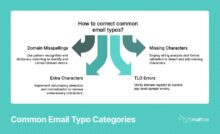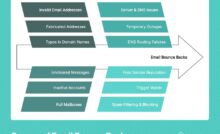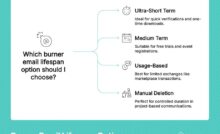Demystifying Email Marketing Deliverability


If email marketing were a video game from the 90s, email marketing deliverability would be the side quest you’re forced to deal with before saving the princess. It’s not entirely irrational to think you’d need swords and at least three white knights to deal with it.
It’s the demoralizing “wait – I just spent a week creating a killer drip email campaign, and I’m getting spam-trapped? Isn’t that why I’m paying my email service provider out of my first born’s college fund?” side quest fail.

The truth is: it’s not. If you want to increase your email marketing ROI, you’ll need to take ownership of your email marketing deliverability.
Your average company is losing ~2% of their emails to hard bounces. That’s a 2% sinkhole on an advertising channel that might give you as high as a 40x ROI. On a $1000 email marketing budget, the average business is leaving over $800 in profits on the table for what often amounts to not having the right infrastructure and tools in place.
To put it simply: fixing email marketing deliverability increases profitability.
Let’s demystify email deliverability and see how you can leverage it to make your marketing efforts less unsuccessful (we’re glass-half-empty kind of people).
Understanding Email Marketing Deliverability
In a nutshell, email or inbox deliverability is the ability to deliver emails to the inboxes of people subscribed to your mailing lists.
Email deliverability should ideally be at 100%, but is usually less than that due to problems such as:
- Your emails are getting caught in the spam filter
- Your emails are getting blocked by the user’s ISP
- You’re sending emails to invalid addresses
If your emails are flagged as spam often enough, they’ll stop appearing to the rest of your mailing list subscribers – not just to the people with ISP problems, or the people who are flagging them as spam.
Think about that for a second. You’re being punished by ISPs and you might not even know it.
This is a problem because undelivered emails cut back on your ROI. The more undelivered your emails, the greater the effect. It’s like a leaky bucket but instead of water that’s leaking, it’s your profits. You can get a more accurate measurement of your ROI by using this calculator.
Non-profits, for instance, lose around $15,000/year in donations just because spam filters are blocking their fundraising emails – that’s absurd. Even breast cancer awareness is getting spam-trapped.
The usual suspects behind undelivered emails are:
- Your email reputation
- Authentication
- Your technological infrastructure
Email reputation
If you’re familiar with SEO, you know that search engine algorithms punish or reward certain behaviours.
Email reputation is kinda like that, but primarily anchored around your sending practices. Your practices over the long-term are then evaluated by ISPs to determine whether you’re spamming your subscribers, or providing them with valuable information.
Here’s how you can improve your email reputation:
1) Consent
Make sure that your email subscribers opted in through an opt-in form and that you didn’t get their email addresses without their consent. Similarly, clearly state where they can opt out of your emails.
This is especially important when it comes to complaints users make when they see a strange email in their Promotions folder, and click “Mark as spam.” A significant number of these complaints will get you permanently thrown into the junk folder with magic pills, Nigerian princes and phishing scams.
Even if you were just selling socks.
2) Consistency
Don’t deviate from a normal sending schedule of your emails. High-volume and mass-sending in short or inconsistent timespans will catch the attention of ISPs, and can be flagged as spam.
Instead, keep your email volume scheduled and consistent, and adjusted to your subscribers’ preferences.
3) Bounce rate
Email bounces happen when subscriber emails are no longer active (their inboxes can’t receive your messages), and this gives a signal to the ISP that you’re not taking care of your mailing list and obtaining email addresses through sketchy methods.
Monitor your email campaigns and remove all the hard-bounced email addresses to decrease your bounce rate. Any good email service provider worth paying for will likely do this for you automatically.
Authentication
We live in a connected world where bad information, fake news, fake accounts spreading fake news, spam, phishing attacks, and so on and so forth runs rampant. For ISPs to determine you’re not one of the bad guys, they want you to setup authentication.
Authentication proves that your email is coming from you, not someone impersonating you. Think of it as calling your bank and verifying your personal data before making changes to your account; you’re confirming that you’re the person you’re claiming to be.
The main two authentication policies you can implement are DKIM (Domain Keys Identified Mail), and SPF (Sender Policy Framework). Yes, go get the techie person from your marketing team for that.
The good thing is you only need to set it up once. ISPs will verify that the email is coming from you, so it’s less likely your email will be mistaken for spam.
Infrastructure
The infrastructure you need when you’re sending 1 email a week is not the same as when you’re sending 10 emails a day to thousands of accounts.
If you’re investing in your email marketing efforts, you should invest in your email infrastructure and a good email service provider (ESP).
Of course, if you’re running a small business and have an email list of about 200 subscribers, you can keep using free third-party newsletter providers. However, when you reach a certain point (and when email marketing starts bringing in serious revenue), you’ll need a dedicated program or a high-volume ESP.
Here’s what you should look for in your email infrastructure and ESP to improve your ROI:
1) Dedicated IP addresses
If you’re sharing an email IP address with other email senders, their behaviour will affect your reputation. This is especially important if you send a lot of emails. You want a dedicated IP address for your email, so it’s connected to you and only you.
Think of it as living in a building vs living in a house: If your neighbour floods their bathroom above you in a building, you’ll have water damage, too. But if you live in a house (have your own IP address), there’s no neighbour to cause a flood above you.
2) ISP feedback
Feedback is important, and so is the feedback your subscribers give to their ISPs.
Most ISPs offer a way of connecting with them so you can see who flagged your email as spam, allowing you to remove them and reduce the undelivered email rate.
Email Marketing Deliverability Tips
As you can see, email marketing deliverability is all about pleasing the ISPs and your subscribers.
People are bombarded by almost 105 billion emails sent every day. Even reputable companies with opt-in newsletters are starting to lose ground to the swarm – and ultimately, email marketing deliverability depends on your emails standing out and actually being read.
The trick is in cutting through the noise. And if you’re producing quality content your subscribers enjoy (and which turns them into customers), you should be ensuring they can get it and read it.
How?
1) Opt-in and preferences
If you send emails once or twice a week, you should be good. But if you send them more often, and tailoring newsletters to audience segments, it’s good to have a preference centre.
Your preference centre should list all your available email campaigns for the segment (e.g. Promotions and offers, Weekly newsletter, Tips & Tricks, etc.), and show the subscribers which campaigns they’re subscribed to.
If they want to unsubscribe, they can do it through your preference centre.
In return, you’ll get less bounces and spam flags.
2) Welcome emails
These days, if we don’t get a welcome email, we think the service we just subscribed to hates us.
It’s also a great way to warm up your subscribers and convert them into customers from the get-go. After all, welcome emails generate 320% more revenue than other promotional emails.
We’re not saying to send cupcakes through email, too, but heck, welcome emails matter.
3) High volume is not always the right volume
Like we already said, there are 105 billion emails sent every day. Your subscribers can, and will get oversaturated if you send them emails five times a day.
The content is key so when you’re deciding on your frequency, make available content the deciding factor. If you can send quality emails three times a week, go for it, and test how your subscribers react.
If you see your open and click-through rate going down, it’s time to stop, drop, and reassess.
4) Spruce up your mailing lists
Depending on your marketing activities, you may have acquired subscribers who clicked ‘count me in’ just because they thought they were going to win something.
You may also have subscribers who decided they wouldn’t buy fur coats from your super exclusive store anymore because they’ve turned vegan after a trip to Thailand. Who knows?
But these aren’t the quality subscribers you should be focusing on when it comes to email marketing deliverability. They often don’t open your emails, or they flag them as spam.
So it’s best to go through your mailing list once in a while, and remove everyone who no longer seems interested.
That’s what keeps the ISPs interested, and your emails delivered.
Your Email Life-hack: Email Verification
Ignore ROI for a second – it’s no secret that email addresses cost money to store, particularly on the most popular ESP vendors. Bounced emails alone can move you up an entire spend quartile to a higher paid plan. The last thing you want to do is waste money on emails that aren’t even valid.
Email verification is your secret weapon for pruning your list of bad actors. There’s a lot you can do to ensure the emails you’re getting are legit, but the best bang for your buck, by far, is to invest in an automated system that does it for you.
mailfloss does it for you automagically, for as low as $17/month. Check out our free email verifier if you aren’t ready to start a trial.
The Mystical Email Marketing Deliverability
Ultimately, email marketing deliverability isn’t all that mystical. It’s the unsexy chore & maintenance exercise you need to work on to keep your revenue engine choo-choo-ing, but once you’ve got the fundamentals down, it becomes pretty routine.
Great email marketing deliverability is ultimately the simple byproduct of writing good emails, and sending it to solid lists of people who actually want them.
Ever watch the show ‘Kitchen Nightmares’? Where Gordon Ramsey goes and fixes restaurants? He always focuses on the simple things – clean kitchens, simple menus, organized furniture. The marketing equivalent of that is email deliverability – get your house in order.
Once you put a few of the foundations in place, and actually worry about writing good emails, your deliverability will become industry leading and it’ll reflect in your ROI. Ultimately, the single best rule of thumb for email marketing deliverability is the same advice your grandma would give you (if she happened to be an email marketing wiz): send emails people give a damn about.
Recent Posts
Improving Email Deliverability with Typo Correction: Our Set-and-Forget Solution
Boost your email marketing performance with mailfloss's automated typo correction. Learn how this set-and-forget solution…
What Is a Bounce Back Email?
Learn what causes bounce back emails, how they impact your marketing, and proven strategies to…
What Is a Burner Email and Why You Might Need One
Discover what burner emails are, how they work, and why they're essential for protecting your…
7 NeverBounce Alternatives: Email Verification for Specific Business Models
NeverBounce is a well-known email verification platform that helps businesses reduce bounce rates and improve…
Boost Deliverability Rates with a Reliable Email Address Correction Tool
Learn how email address correction tools can increase deliverability rates by up to 15%, fix…
The Overlooked Benefits of Real-Time Typo Correction in Email Forms
Discover how real-time typo correction in email forms improves deliverability, enhances user experience, and saves…



View Comments